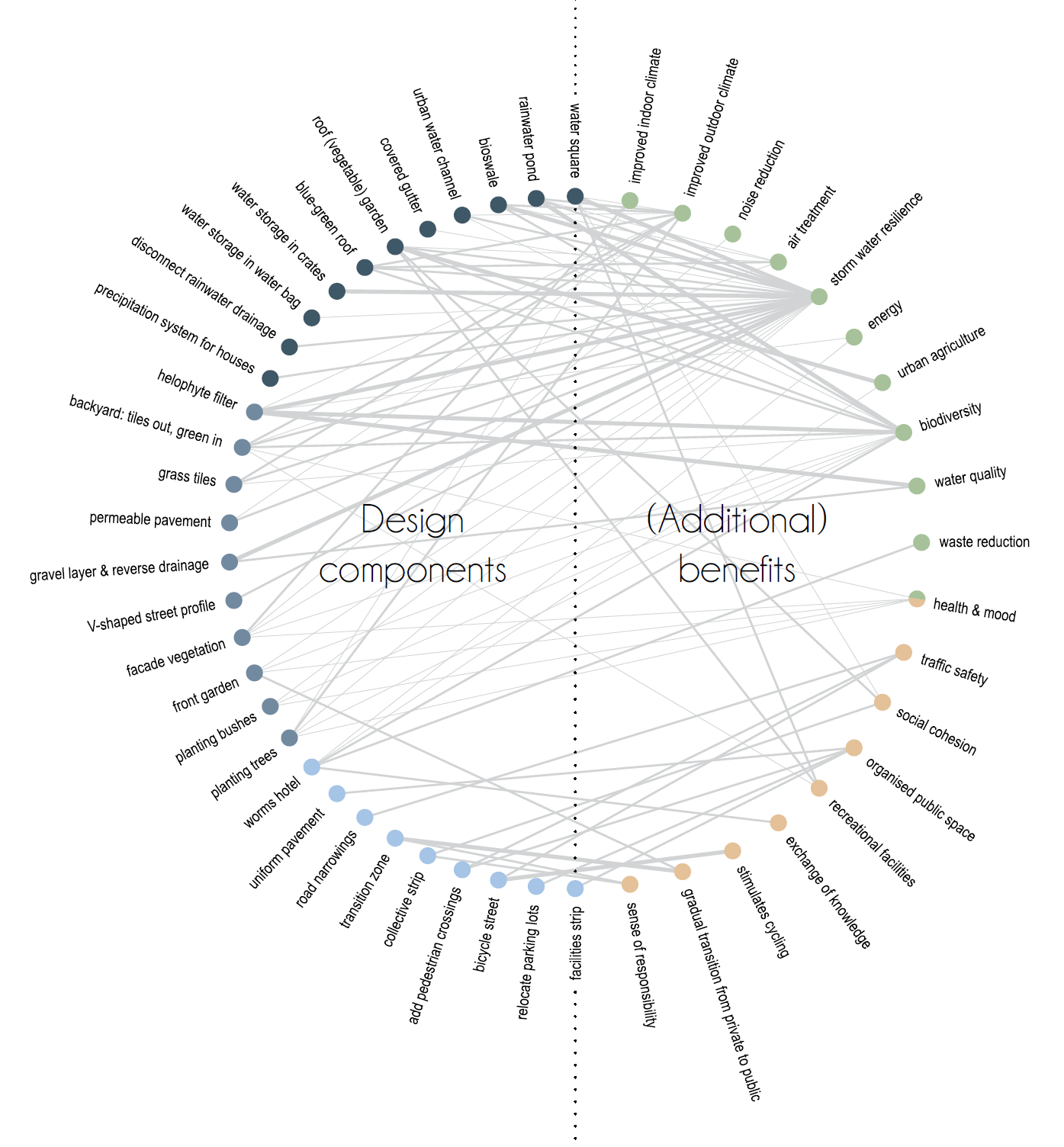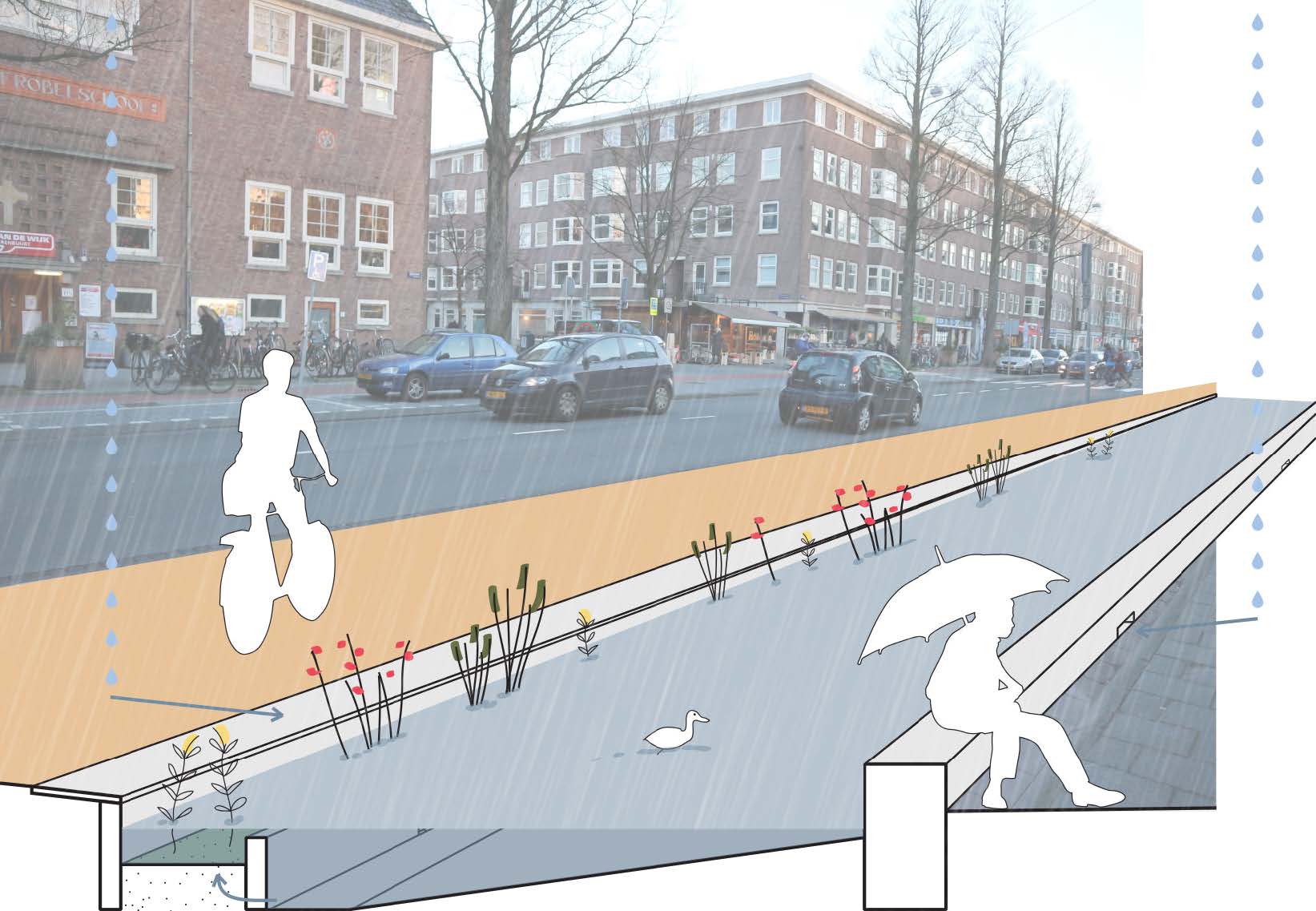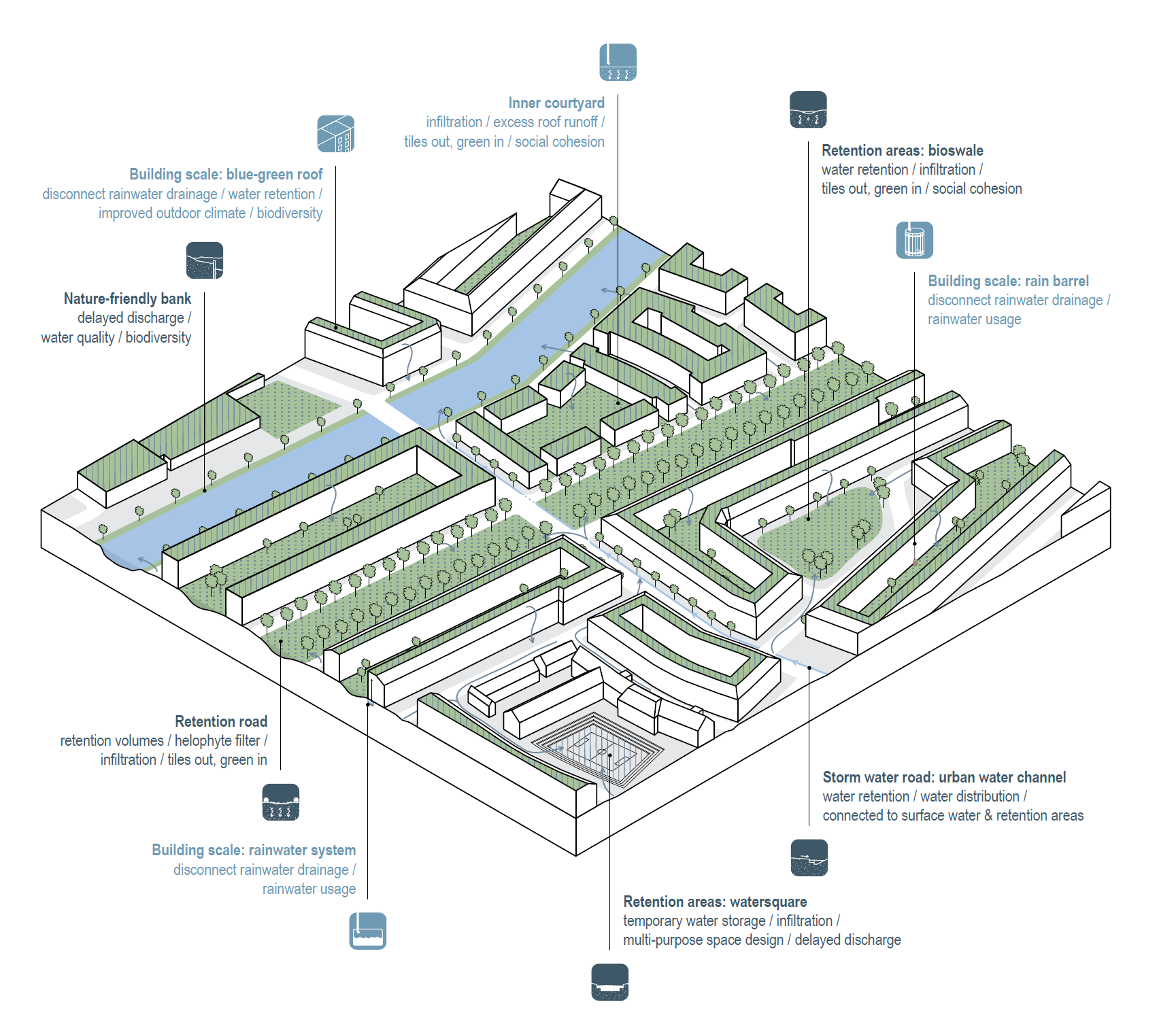Prevent the Flood: Creating multi-lateral solutions for a storm water resilient Amsterdam
Student: Marieke Oosterom
Mentors: Kristel Aalbers, Birgit Hausleitner, Dirk van den Heuvel
Program: MSc Urbanism
Graduation date: 05-07-2018
Abstract
This graduation project is about the storm water resilience of Amsterdam. The effects of climate change and urban growth, like extreme weather conditions and a larger paved area, cause undesirable conditions regarding storm water resilience of (Dutch) cities. Water nuisance and sewage overflows caused by heavy rainfall occur more and more often. This is undesirable since it may cause dangerous situations related to accessibility, water quality and ecology and it disturbs daily life. Most interventions which are currently used are insufficient as they could address way more sustainable urban aspects at the same time. Therefore, the goal of this graduation project is to make Amsterdam a storm water resilient city, while simultaneously address other local and sustainable urban aspects, in order to create a future-proof city.Reaching this goal started with an extensive analysis of the current water nuisance in the city. The water nuisance has been explained by several correlations: the correlation between water nuisance and streets with a predominant retail function, and between water nuisance and the most common spatial typology. These correlations form the basis for the chosen strategic design locations: OLVG west on building scale, Javastraat on building (block) scale, Rokin on street scale and Rivierenbuurt on neighbourhood scale. Similar locations are of frequent occurrence in the city and could be transformed in the same way.The four design sites have been extensively analysed to find out what aspects of that location were in need of improvement, apart from the storm water resilience itself. This analysis has been done on several scales and revealed guidelines for the desirable interventions, related to environmental and socio-economic urban aspects. At Rokin, for example, the high pressure on public space resulted in underground interventions related to storm water resilience and interventions above the surface that provide the human activities of that location. Most of the design components contribute to the stormwater resilience of the city, but address other, additional benefits as well. These additional benefits include both environmental and socio-economic aspects. The designed vegetable garden on the roof of OLVG west, for example, improves the storm water resilience of that location, but creates a recreational facility too.Implementing interventions on several scales creates a network of interventions that work together. In practise this means that when the storage or infiltration of a design component has been reached, other components should compensate. In this way, interventions on smaller scales can create a network of interventions that functions on the city scale. When the locations similar to the strategic design sites are being transformed too, this network arises. In this way, Amsterdam will become a storm water resilient, future-proof and liveable city.
Subject
Storm water resilience
Sustainability
Amsterdam
Multi-lateral solutions
Network design




